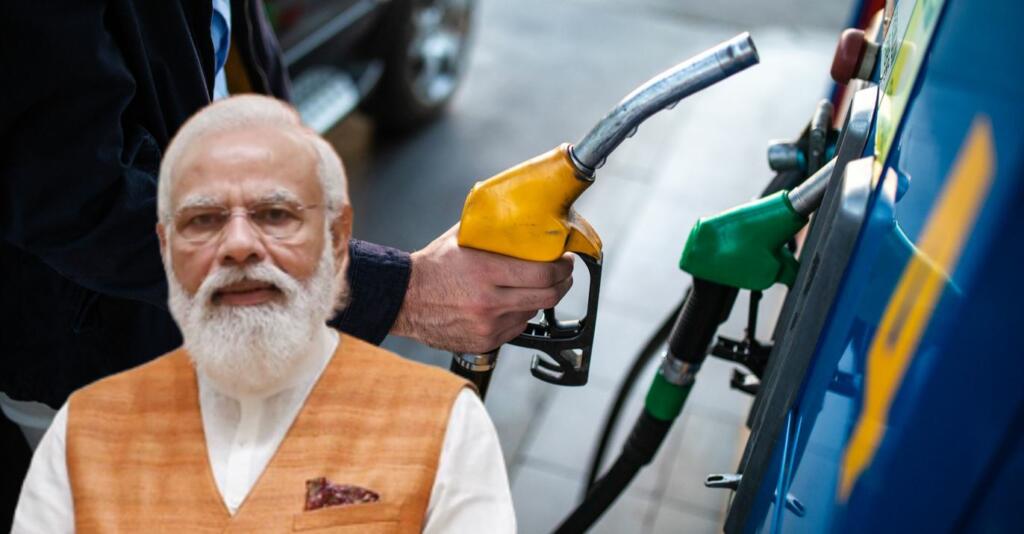In a clear demonstration of India’s commitment to keeping the planet clean, the Modi government has drastically reduced India’s consumption of diesel for the last 7 years.
Share of diesel vehicles in Indian market down to 17percent
Society of Indian Automobile Manufacturers (SIAM) has come out with their data regarding the annual sale of vehicles in various segments. According to the data, the passenger vehicles running on diesel are only about one-sixth of the total vehicles running on Indian roads. The data shows that, as the price difference between petrol and diesel narrows in favour of petrol, diesel vehicles on Indian roads have been reduced to 17 per cent of total vehicles.
The changing pattern of vehicle sales comes off as a vindication of the Modi governments’ emphasis on phasing out petrol and diesel vehicles from the market. In 2012-2013, diesel vehicles comprised 58 per cent of total vehicles running on roads. This was due to the fact that petrol used to cost Rs 20-25 per litre more than diesel. By 2021, the petrol got cheaper in terms of its comparison to diesel and the difference between their prices was reduced to Rs 6-7.
Not just vehicles, diesel is a multi-sectorial fuel for Indians
In terms of sources of energy used for running a vehicle or some other mechanical equipment, diesel causes more pollution than petrol, compressed natural gas and electricity. Other than fuelling the vehicles, diesel engines are also used for various construction works such as lifting steel beams, digging foundations and trenches, drilling wells, paving roads, and moving soil safely and efficiently. Diesel is also used by farmers to run their tube wells which are used for watering large farmlands. The mobile towers and malls also constitute a major chunk of diesel consumption in the country, as they use diesel engines for maintaining their 24*7 electricity supply.
Elimination of Diesel vehicles has been a key goal for the Modi government
Before the Modi government, diesel was subsidised by the previous governments keeping in mind that it was mainly used by commercial vehicles to carry freight from one state to another. The subsidy was misused by an average Indian consumer as due to low cost, an average consumer used to opt for passenger vehicles running on diesel. In 2014, the Modi government decided to declutch the pricing of diesel and petrol from the government and now market forces were free to decide the price. This lead to a price war between both fuels and diesel prices are now within touching distance of that of petrol.
Although India has not outrightly banned diesel, its emphases on clean energy are causing diesel to disappear from the market.
- In 2015, the National green tribunal set up a precedent for the whole country to follow. The tribunal banned the use of diesel vehicles more than 10 years old on Delhi roads.
- To eliminate old and non-compliant vehicles, the Modi government launched a national scrapping policy in March 2020.
- Similarly, the onset of Bharat Stage VI parameters for vehicles has made it difficult to produce diesel-run cars for the companies.
Automobile industry supports the government
The government is also getting support from big names of the automobile industry.
- Maruti Suzuki India stopped making manufacturing diesel cars in 2020. Indian car buyers supported the decision as the company sold 50 per cent of total cars sold in India in 2020.
- In July 2021, Hindustan Zinc decided to invest $1 billion in order to replace diesel vehicles with battery-run electric vehicles.
- In the April-June quarter of 2021, the demand for the electric vehicle segment of TATA Nexon was at par with its diesel counterpart, in spite of the former costing Rs 1.30 lakh more than the latter.
India has the potential to emerge as the green energy superpower
The Modi government has adopted a war-like approach to promote green energy in the country. To promote the adoption of electric vehicles in the country, the government has launched FAME (Faster Adoption and Manufacturing of Hybrid and Electric Vehicles) in 2015 whose phase 1 continued till 2019. The FAME entered into its second phase in 2019 with the government allocating Rs 10,000 crores for the scheme. This scheme has made two-wheeler electric vehicles affordable for ordinary Indians. Similarly, this year Indian government allocated Rs 26,000 crores under a Production-linked incentive scheme to foster the production of electric vehicles in the country.
Read more: Government’s big push to promote Electric Vehicles in India
Currently, CNG and electric hybrid vehicles comprise about 6.6 per cent of total vehicles on Indian roads. Petrol vehicle, in spite of being more polluting than CNG and hybrid, is also witnessing a rise in its share of passenger vehicles as it witnessed a 17 per cent increase in its annual market share in 2020.
After dominating the roads for about 90 years, diesel vehicles are slowly disappearing from the market, making way for cleaner and greener electric vehicles. As diesel vehicles are dying their slow death, vehicles running on petrol are becoming the next big problem to tackle. The government, the automobile industry and the general public need to cooperate to make India a powerhouse in the green energy segment.
